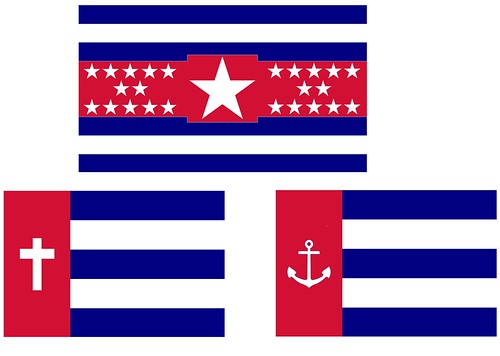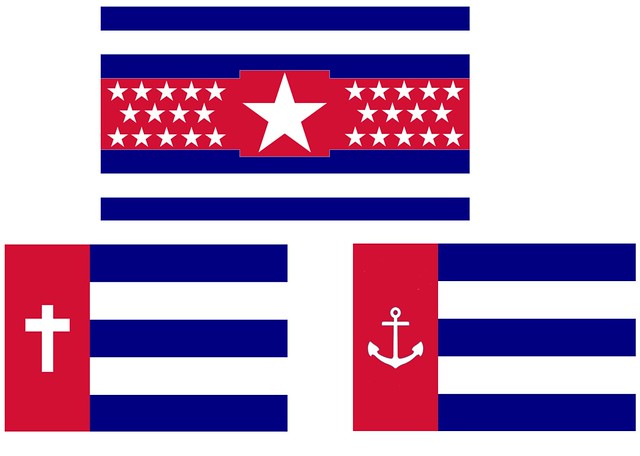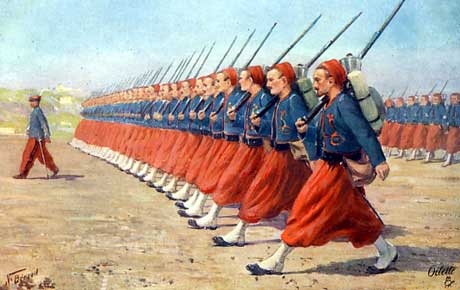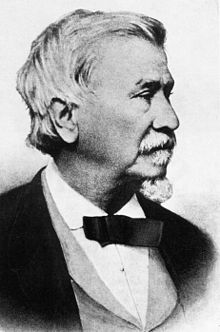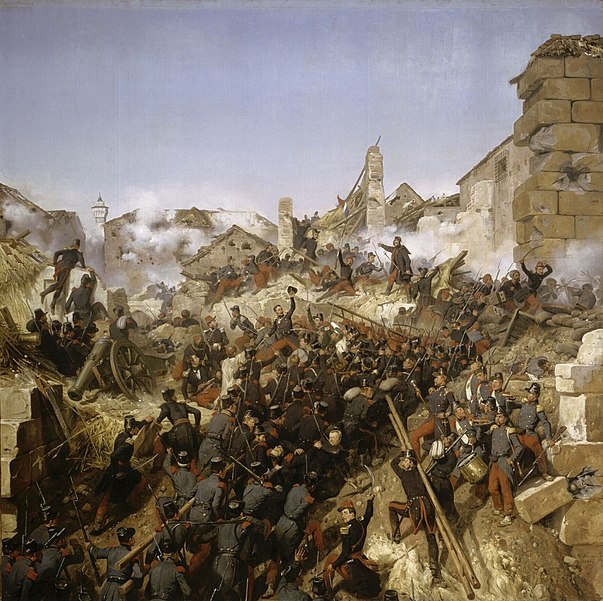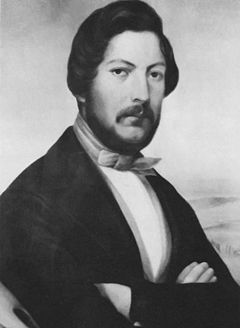Here it is, the first Race for Africa chapter.

I'm honored Napo gave me permission to write these chapters, and this first one came out great IMO. Two more Race for Africa chapters will follow, this is only the begging. This
1856 map should give a good picture of whats going on as well. So without further ado, here it is.
The Race for Africa
Part One (1840-1865)
Without any doubt the French Empire is the Third Rome. [....] During the Great Wars, France under Caesar Napoleon proved herself by conquering nation by nation, even when she was against the odds. [....] Now, thirty years after the wars have ended, the French Empire is poised to dominate the dark continent of Africa. If she could have Europe under her heal, why not the Dark Continent? [....] The young Caesar was many years ahead of him, and may he bring glory to the Empire forever more!"
-Excerpts from the article "The Rise of the Empire across the globe" by French writer, novelist and journalist Octave Louis Martel, Imperial Times (Paris), July 19, 1845
During the Gilded Age, known in Europe as the Second Renaissance, the great powers of Europe, making new breakthroughs in technology, science and general industrialization, were determined more than ever to conquer new lands in Africa, Asia, and other "exotic" locales. These European Empires had particularity desired a new dominance over Africa ever since the 1832 World Congress, when it was agreed that the Empires of France and Spain would be given dominance over Saharan Africa, while Prussia, a rising power, would hold dominance over Sub-Saharan Africa. These points were agreed on by all of major powers of Europe and the Americas, and at the time they seemed fair and forthright.
It reality, these assurances were over-generalized and rather vague. While all of the world powers observed these accords, they were not viewed all that seriously due to the fact that European nations at that time were not entirely capable of colonizing the depths of Africa, thanks to the lack of immunities against diseases, hostile climates, hostile and unknown tribes, etc. All that the leaders and emissaries did at the Congress to formalize these borders was to draw them on a map of Africa. A line was drawn at the 5th Parallel North and at the 10th Parallel South. Above the 5th parallel was marked “French Africa” in several different languages, while below down to the 10th Parallel North was marked “Prussian Africa”, again in several different languages. The "Prussian line" stopped at the Tenth Parallel South, as Portuguese and Dutch colonies were already located below, and were tacitly given influence over this region of Africa. Meanwhile many a nation, be they a major or minor power, hoped to use these vague assurances to their advantages by slipping in their own colonies in the future. However, these were the earliest years of the Gilded Age. Colonization would not be fully under way until years later.
France-Spain and Prussia, the arch rivalry of the Race for Africa
The two main players throughout the Race for Africa were the French Empire (from 1835-1896, the Franco-Spanish Empire and after 1896 the Tripartite Empire) and the Kingdom of Prussia (after 1850 the Empire of Prussia). In 1832, France had owned quite a bit of land on the coast of North Africa, while Spain owned at least one port. In 1835, when France and Spain officially went into a personal union with the signing of the Treaty of Seville and Napoleon II's subsequent marriage to his Spanish consort Eugenie, these African holdings officially became Franco-Spanish colonies. On the other hand, Prussia had made her first ventures into Africa when she received the formerly British port of Lagos after the division of the old British Empire at the World Congress of 1826. It was just one small holding at first, but it was a humble beginning to an impressive empire. Said empire would grow just a little more in 1828, after the fall of the Spanish Empire, when Prussia was given the formerly Spanish islands of Bioko and Annobon as a gesture of goodwill.
Thus Prussia, as a new power on the world stage, was especially eager to establish a strong foothold in Africa after 1832. During the late 1830's they did just this. On the coast of Western Africa, along the Equatorial region, Prussia founded the colony of Friedrich-Wilhelmsville (OTL's Libreville, Gabon) in 1836. This would be promptly followed by the foundation of Neue Berlin (OTL's Port Gentil, Gabon) in 1837. The Franco-Spanish Empire took notice of this, and most certainly wanted to one-up their new Prussian rivals in Africa. However the Franco-Spanish Empire was already massive, the most massive world wide empire since the time of Genghis Khan, with most of Europe, North America, South America, the Indian Subcontinent and Australia under their control. As a result, Caesar Napoleon II decided to take colonization of Africa slowly.
The year 1838 came, and turned Europe's attention away from Africa, albeit temporarily, due to the assassination of the Austrian Emperor and crackdown on anarchists. With Austria-Hungary in due time to come into a personal union with France and Spain, the history of European colonialism would be changed forever. In the meantime, France still had colonizing Africa on its agenda. In 1841, two new Franco-Spanish cities were founded in North Africa, just under the Kingdom of Morocco. They were Laâyoune or El Aaiún in Spanish, and Cape Napoleon (OTL's Cape Bojador). These colonies were bilingual, with French and Spanish as official languages and with colonial officers from both nations in charge of the colonies. Many more future Franco-Spanish colonies would contain an equal influence of French and Spanish culture, with Austrian, Hungarian, Bohemian and Slavic culture coming into the mix after the formation of the Tripartite Empire. All these European cultures would in turn mix with the various native African cultures.
Franco-Spanish Zouave Infantry patrolling Cape Napoleon
Meanwhile, Prussia continued to found more outposts, including Neue Potsdam (OTL's Doula, Cameroon) in 1841, Von Zietensville in 1842 (OTL's Beua, Cameroon), and Stadt von Afrika (OTL's Omboue, Gabon) that same year. It was also during this time that Prussia would begin to have her eyes on the large and unexplored Congo region. However, the desolate interior of the Congo would not be colonized for years to come to due to several deadly diseases which thrived in the jungle, along with the presence of hostile tribes. Still the land was recognized as Prussian, and expeditions would be carried on along the Congo River sporadically during the 1840's and 1850's, the most famous being the 1854 expedition by German explorer August Kappler, in which his expedition of 500 men (mostly Prussian but also containing some European volunteers) successfully traveled up the Congo River and back to Neue Potsdam. A second, smaller expedition was made in 1861, which a few months later, mysteriously disappeared. It was speculated that the party was attacked and killed by hostile natives, though there was no evidence to say exactly.
One of the most important events in the early days of the Race for Africa came in 1849. With the Ottoman Empire in turmoil fighting the Balkan Wars, the Franco-Spanish Empire decided it was high time to conquer Algeria, an Ottoman dependency the Dual-Monarchy had long had its eyes on. The invasion began on August 12, 1849 with multiple troop landings across the Algerian coast targeted at Algiers and Oran, with the Franco-Spanish Empire not even bothering to issue a formal declaration of war. The invasion was commanded by generals from both nations: the French Count de Ghaisnes de Bourmont and the Spanish Duke of Valencia Ramón María Narváez. They both proved themselves excellent commanders during the war, with their use of scorched earth tactics working amazingly well against the Arab defenders. These tactics greatly raised the moral of the soldiers, and made quite a name for the two generals back home. These successful tactics, combined with the raising morale, made sure the war was over within three months.
"La prise de Constantine" by Horace Vernet
By the begging of November most of Algeria was overrun by the Franco-Spanish invaders, and the Ottoman provincial ruler Hussein Dey, seeing no way out, surrendered on November 13, 1849. The Treaty of Oran was singed a day later, and established Algeria as a Franco-Spanish colony. The Ottoman sultan Abdülmecid I was not pleased, already on the verge of losing his land in the Balkans, but had no choice. Franco-Spanish settlers would be gradually settled in Algeria, with French Spanish and Algerian presence and culture becoming noticeable by the mid 1860's.
Back in Europe, on October 12, 1850, the Empire of Prussia was born, encompassing not only Prussia, but Saxony, Poland and Finland. While all this was going on, Africa was still on the eyes of Europe. Now Prussia became even more enthusiastic to colonize much more land in Africa with much more people, and they made no secret of it. These new countries under Prussian rule would bring new wealth to the country and speed up their colonization of Africa. A new wave of future settlers would also bring to these colonies in the middle of Africa a mix of North German, Polish and Finnish culture. Between both the Tripartite and Prussian Empires, there would be a rich cultural mix with the European and African cultures.
When the 1860's rolled around, it was clear to all that the Franco-Spanish-Prussian rivalry that started in the 1830's was beginning to intensify. This intense rivalry between the two multi-ethnic super powers would come to be simply known as "The Great Game", a term coined by English writer, journalist and politician J.R. Kipling in 1894.
Other Powers
Aside from France-Spain and Prussia, the Kingdom of Holland was increasingly becoming a rising power in its own right, having colonized most of Indonesia (and claiming the whole region), New Guinea and Eastern Australia. In Africa, the Dutch had one possession, the Cape Colony, which expanded rapidly during the late 1830's through to the 1850's. It should also be noted that by the late 1840's, Holland was officially no longer a puppet state of France (though it was still a close friend and ally), and was very much on its own. This new independence from French control allowed the Dutch Empire to grow even more than it already had been. By 1850 the Cape Colony was the most prosperous of any Dutch colony. The residents of the Cape Colony were an ethnicity known as Afrikaners or Boers, and were the descendants of Dutch Calvinists, Germans, French Huguenots, Frisians, and minor numbers of other Europeans.
The Boers played a large role in the expansion of the Cape Colony along with the mother country, with several new cities being founded by the Boers, sometimes in cooperation with new Dutch settlers. One of the most prominent Boer leaders was Andries Pretorius, and was instrumental in the expansion of the Cape Colony, moving of settlers into the frontier and foundation of new cities. These new cities included a new capital of the colony, named Lodewijksville (OTL's Johannesburg) (after King Louis I), Pretoria (named after Pretorius himself), Bloemfontein, New Friesland (OTL's Kimberly), among others. The rather sporadic conflicts with local tribes were either minimal or easily won, and the Cape Colony became so large it was officially reformed into "The Colony of Dutch South Africa" ("De Kolonie van de Hollands Zuid-Afrika" in Dutch) in 1859, with Pretorius as its first governor. While the Boers continued to have close ties with their mother country over the decades, during this time the Boers would begin to develop a new identity and national consciousnesses. By the 1860's, greater calls were being made from the Colonial Parliament in Lodewijskville for some sort of autonomy from the mother country, with some radicals calling for all out independence. Still, most were satisfied with the relationship between master and colony, so things stayed as such in the immediate future. Expansion would continue in the future as well, bringing the Boer into inevitable conflict with other local tribes, in particular the Zulus.
Andries Pretorius, the first Governor of the Colony of Dutch South Africa
Boer settlers in the interior of Dutch "Zuid-Afrika", circa 1840
In terms of other nations, Portugal (later known as the Portuguese Confederation) had already owned colonies in East and West Africa for centuries, while Denmark had owned the Gold Coast ever since it had been given to her after the dividing up of the British Empire at the 1826 World Congress. Denmark began slowly colonizing the surrounding area, founding the city of New Aarhus in 1848 for example. While France and Prussia would be the dominant forces in the Race for Africa, other European nations would play a role of their own in due time.

